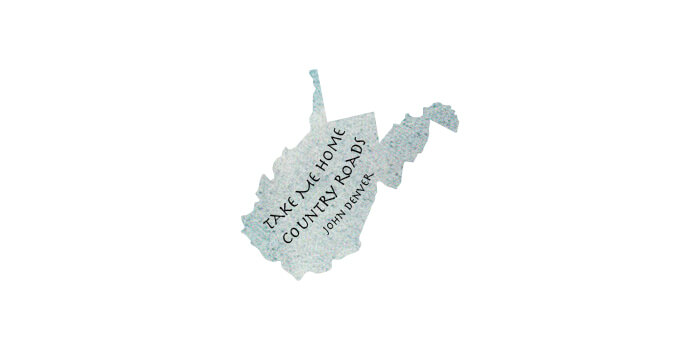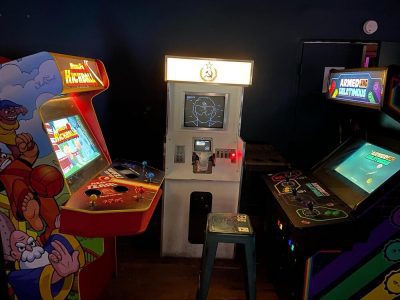Musical Map Of The USA: West Virginia—John Denver


In the 4th grade I was assigned my very first “research project.” It was to write an eight to ten page handwritten report on one of the 50 states, excluding California because we lived there and had already done an extensive class unit on its history. I don’t remember which state I chose, but I do remember my dad accompanying me to the library to pick out a book about it. As we scoured the shelves, he directed me to a series of state history books written for kids. Almost every one was there, in chronological order, but he looked dismayed because West Virginia, the state he grew up in, wasn’t present. My nine-year-old self reassured him that it might be missing because someone already took the book out of the library that day. I pointed to “Virginia,” suggesting that perhaps since it was already there the library had no need to for “western” part.
I remembered the incident a few weeks ago, when my dad and I met a couple from Virginia while on a hike. He offhandedly told them where he grew up, and the woman looked at him and said: “See, you’re ALMOST Heaven. We’re it,” she referenced John Denver’s “Country Roads” and pointed at her chest for emphasis. My dad laughed, so used to his home state being relegated to second-best, or forgotten almost entirely, that he didn’t bother arguing. Of course, Denver didn’t mean for “Almost Heaven” to mean “second-best to TK.” He literally meant that the oft-forgotten state is so beautiful it might as well be heaven, a charming little slice of Appalachia inhabited by life that’s “older than the trees.” It’s a cornball song made by a cornball songwriter, but it’s inarguably an important one for a state that isn’t frequently referenced in pop culture.
When you Google “Charleston,” the first few hits all reference South Carolina. Not Charleston, the capital of West Virginia. Not Charleston, the city that my dad spent most of his young life in. The first and only time I traveled there was for a wedding a few years after completing that so-called “research project” on a totally different state. Up until then the things I knew about West Virginia were a few major flashpoints: mountaintop removal, The Mothman Prophecies, Blue Ridge Mountains, Shenandoah River. The last two I pulled from “Take Me Home, Country Roads,” a song that my dad referenced jokingly whenever he spoke of home. “Almost Heaven” is its best pull-quote, emblazoned on a bumper sticker we bought in the Charleston airport on the way home. It features what would be proudly described as a “hillbilly” (there are many “hillbilly” tourist trinkets to be found in West Virginia) sitting riverside, the words ALMOST HEAVEN: WEST VIRGINIA emblazoned across the top.
In the week leading up to the wedding my dad took me to see all of the almost heavenly things he remembered from his childhood. He drove me through town and showed me the local haunts; old bookstores and antique shops and a new mall that wasn’t there the last time he visited in the ‘80s. It was a week of unconventional sightseeing, one that felt needed after hearing about the place for so long. We took a drive to check out the “famous” Mystery Hole, a bizarre fun house near Hawks Nest State Park, a tourist trap designed to entertain an earlier generation.
On the drive there my dad told me to look out at the mountains, each one with its top chopped clean across, an eerie extraterrestrial sight that looked nothing like the mountains I’d envisioned when Denver called West Virginia “Mountain Mama.” I went to the Dairy Queen for the first time ever and met a biker gang while I lapped up a fast-melting vanilla cone in its parking lot. We took a day trip to the Blenko Glass Company factory in Milton, where I saw a moth the size of my face that I got a tattoo of a decade later, which I describe as my own personal Mothman if someone inquires. On the Fourth Of July, my cousins and I lit roman candles at the end of a cul-de-sac while the then-president George W. Bush gave a speech where the official fireworks display was happening across town.
I sat on the porch every night of that week, breathing in sticky humid air and grabbing at lightning bugs. I’d never seen lightning bugs until that summer, and even though I was a pre-teen trying my best to be surly, they still looked like magic; small incandescent bulbs hovering a few inches above the grass, blinking when they landed next to me. At the end of the week, the night of the wedding, the DJ dedicated a song for the disparate states guests traveled from. He played an excerpt of the Beach Boys’ “California Girls,” then a song for Kentucky, Atlanta, Alaska, eventually ending on “Take Me Home, Country Roads.” My dad and I belted out every word, practically screaming the lines: “A radio reminds me of my home far away / Driving down this road I get a feeling that I should’ve been home yesterday.” We were standing on a country club lawn surrounded by mountains, the sunset churning from blue to pink to orange, and it wasn’t really heaven but it felt close enough.
This is one of more than 50 posts that make up our musical map of the United States, published by region—the West, Midwest, South, and Northeast—by writers who have strongly associated a song with a state.
This is one of more than 50 posts that make up our musical map of the United States, published by region—the West, Midwest, South, and Northeast—by writers who have strongly associated a song with a state.
[sc name=”nattysaw9″ ]
You might also like 




















